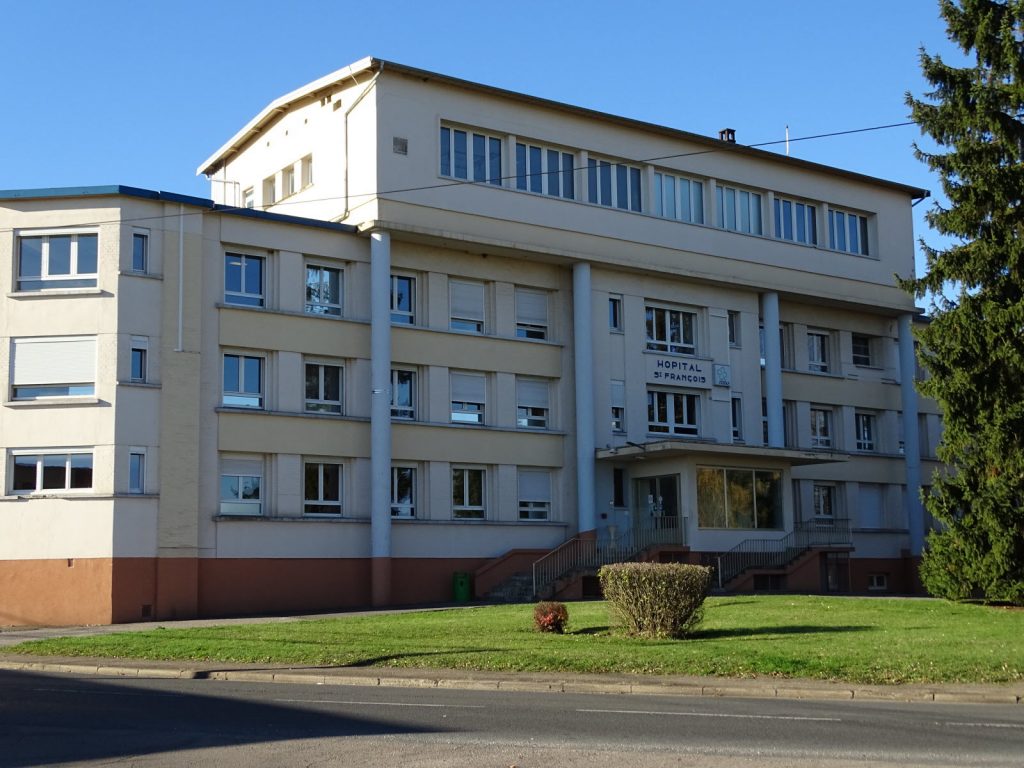This post originally appeared in the Navigate the Future blog.
Hospitals in a pandemic, like COVID-19, create a particular kind of challenge. Staff and visitors, along with patients there for other reasons, create a high number of potential cases by congregating in a single space. The very facilities meant to contain the virus, then, risk becoming places of contagion.
In March, we at Dassault Systèmes launched an Open COVID-19 Community to gather initiatives supporting the fight against the pandemic. It is open to both the public as well as our employees. One of our colleagues joined for a personal reason: his beloved grandmother ended up hospitalized with COVID-19. When he was unable to visit her because of precautions put in place by the hospital, he wanted to come up with a way to make hospitals safer for staff, non-COVID patients and visitors. He reached out to a team of his peers and together they turned to work with the Marange Silvange Hospital in France to help the clinic rethink how they handled physical distancing.

Everyone involved was acutely aware that it was vital to separate spaces where COVID-19 patients were being cared for from other patients. But physical distancing in spaces not built for it is incredibly challenging.
Their solution? Managing air currents.
Applying the experience from working on the Leishenshan Hospital in Wuhan, China, this team of experts knew that Computational Fluid Dynamics (CFD) simulation with SIMULIA could help to improve the separation of the floor occupied by both COVID-19 and other patients. As part of a first analysis, the team looked at the contaminated particle concentration (between 0% to 10% of the air). The simulation clearly showed that the natural pattern of the air was moving from the dedicated COVID spaces to non-infected ones. As a result, at some point, contamination could occur in what is considered a safe area. Thus, simple as it may seem, taking into consideration basic aerodynamics using simulation is enough to estimate how the virus could propagate across spaces, corridors and floors.
It is, however, very difficult to have accurate boundary conditions for such a simulation. Assumptions and uncertainties led the team to make certain hypotheses.
The team started with finding an easy way to counter the low pressure area in the safe sector. A simple approach was to reduce the ventilation by 50% in the non-COVID affected spaces as compared to ones affected, which was still at 100%. This was easily done by controlling each sector’s ventilation or by masking parts of them.
Based on the information provided by the hospital, the simulation was developed with:
- All rooms having a ventilation system, extracting air from the hospital floor (massflow outlet).
- Fresh external air being brought to the hospital through natural leakages through the windows. A simplified pressure inlet set at the external ambient level was established for each window. This choice likely overestimates the amount of fresh air provided by the leakages.
- 32 sick people coughing for one second at different times during the simulation. This approach of rejecting 100% of contaminated air is believed to overestimate the amount of COVID particles inside the simulation.
The animation of particles shows that the risk of contamination is greatly reduced with this configuration. Most of the contaminated air remains localized in close proximity to the COVID area.
The team has received positive feedback from the hospital directors. Helping the staff understand what role aerodynamics has to play in virus propagation and how it can be mitigated opens up simple solutions to reduce propagation risk. Our experts are also in contact with local companies who specialize in measurement materials to validate their pressure repartition predictions.
To discover more, watch the informative video:
And for more good news – our colleagues’s grandmother is doing well, recovering from her battle against COVID-19.
SIMULIA offers an advanced simulation product portfolio, including Abaqus, Isight, fe-safe, Tosca, Simpoe-Mold, SIMPACK, CST Studio Suite, XFlow, PowerFLOW and more. The SIMULIA Learning Community is the place to find the latest resources for SIMULIA software and to collaborate with other users. The key that unlocks the door of innovative thinking and knowledge building, the SIMULIA Learning Community provides you with the tools you need to expand your knowledge, whenever and wherever.

